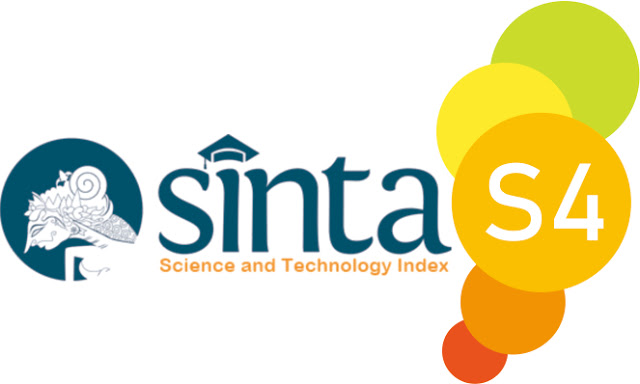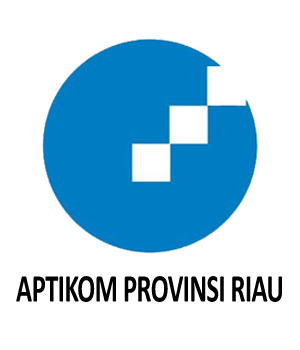Designing UI/UX App for Parents of ASD Children through Social Approach
Abstract
Compared to children’s parents with typical conditions, parents of children with autism spectrum disorder (ASD) experience higher levels of stress. As a result, parents may become more at risk of social stigma and become apart from those who seem can't understand their situation. Parents' stress levels can be reduced by experiencing a positive response like happiness and comfortable. One of the factors that makes parents of children happy and comfort with ASD is social support. In this study, researchers developed a smartphone application that can provide social support—such as groups, information, and emotional support—to parents who have children with ASD. The design thinking approach was implemented in this study, which involved collecting data via surveys, interviews, and observations to designing the UI/UX application during the ideation phase. According to the study's findings, parents nowadays need a parenting app that can make it easier for them to find social support.
Downloads
References
I. N. Sumirta, “Kecemasan orang tua pada anak autisme,” J. Gema Keperawatan, vol. 6, no. 1, pp. 27–33, 2013.
F. A. Setiawati, “Mengenal konsep-konsep anak berkebutuhan khusus dalam PAUD,” SELING J. Progr. Stud. PGRA, vol. 6, no. 2, pp. 193–208, 2020.
J. Grove et al., “Identification of common genetic risk variants for autism spectrum disorder,” Nat. Genet., vol. 51, no. 3, pp. 431–444, 2019.
A. Ma’rifah, N. P. S. Suryantini, and R. Mardiyana, “Strategi Koping Orang Tua Terhadap Anak Autis dan Pola Asuh Orang Tua,” J. Heal. Sci., vol. 11, no. 2, pp. 196–204, 2018.
D. R. Desiningrum, F. Suhariadi, and D. R. Suminar, “Compassion pada Pengasuhan Anak dengan Autism Spectrum Disorder,” Bul. Psikol., vol. 28, no. 1, pp. 45–58, 2020.
Kamlesh Kumar Maurya, “Mental Health Aspects of Parents of Child with Autism,” PsyInsight, vol. 3, no. 1, pp. 22–23, Aug. 2020.
N. S. Da Paz, J. L. Wallander, and J. Tiemensma, “Effects of written disclosure on psychophysiological stress among parents of children with autism: A randomized controlled pilot study,” Res. Autism Spectr. Disord., vol. 53, pp. 7–17, 2018, doi: https://doi.org/10.1016/j.rasd.2018.05.007.
L. Findler, A. Klein Jacoby, and L. Gabis, “Subjective happiness among mothers of children with disabilities: The role of stress, attachment, guilt and social support,” Res. Dev. Disabil., vol. 55, pp. 44–54, 2016, doi: https://doi.org/10.1016/j.ridd.2016.03.006.
V. Yiengprugsawan, B. Somboonsook, S. Seubsman, and A. C. Sleigh, “Happiness, Mental Health, and Socio-Demographic Associations Among a National Cohort of Thai Adults,” J. Happiness Stud., vol. 13, no. 6, pp. 1019–1029, 2012, doi: 10.1007/s10902-011-9304-4.
I. R. Riansyah, “PENGARUH DUKUNGAN SOSIAL TERHADAP KESEJAHTERAAN PSIKOLOGI PADA MAHASISWA,” IJBITH Indones. J. Bus. Innov. Technol. Humanit., vol. 1, no. 1, pp. 403–418, 2024.
N. Khasanah, “Peran Dukungan Sosial terhadap Resiliensi pada Orang Tua dengan Anak Berkebutuhan Khusus,” in Jurnal Forum Ilmiah, 2018, vol. 15, no. 2, pp. 260–266.
A. W. Irawan, A. Yusufianto, D. Agustina, and R. Dean, “Laporan Survei Internet APJII 2019-2020 (Q2),” 2020.
D. Lupton, S. Pedersen, and G. M. Thomas, “Parenting and digital media: from the early web to contemporary digital society,” Sociol. Compass, vol. 10, no. 8, pp. 730–743, 2016.
A. R. Pradana and M. Idris, “Implementasi user experience pada perancangan user interface mobile e-learning dengan pendekatan design thinking,” Automata, vol. 2, no. 2, 2021.
C. G. Thomas and J. Devi, “A study and overview of the mobile app development industry,” Int. J. Appl. Eng. Manag. Lett., vol. 5, no. 1, pp. 115–130, 2021.
A. Felix, D. O. Briyanti, F. M. Young, I. Livaro, and W. Wijaya, “Strategi Identitas Digital: Analisis Personal Branding Di Platform Tiktok,” J. Digit. Media dan Relatsh., vol. 5, no. 2, pp. 92–100, 2023.
M. Muthmainah, “Dukungan Sosial dan Resiliensi pada Anak di Wilayah Perbukitan Gunung Kidul Yogyakarta,” Diklus J. Pendidik. Luar Sekol., vol. 6, no. 1, pp. 78–88, 2022.
A. R. Wiyaringtyas and I. Damajanti, “Kajian Visual Graphic User Interface (Gui) Pada Aplikasi Konseling Online Riliv Dan Bicarakan. Id,” J. Nawala Vis., vol. 4, no. 2, pp. 113–122, 2022.
N. Cross, Design thinking: Understanding how designers think and work. Bloomsbury Publishing, 2023.
R. Dam and T. Siang, “What is design thinking and why is it so popular,” Interact. Des. Found., pp. 1–6, 2018.
N. B. Shahrasbi, L. Jin, and W.-J. Zheng, “Design thinking and mobile app development: A teaching protocol,” J. Inf. Syst. Educ., vol. 32, no. 2, pp. 92–105, 2021.
S. Samson, K. Granath, and A. Alger, “Journey mapping the user experience,” Coll. Res. Libr., vol. 78, no. 4, p. 459, 2017.
S. Feng, M. Yuan, J. Chen, Z. Xing, and C. Chen, “Designing with Language: Wireframing UI Design Intent with Generative Large Language Models,” arXiv Prepr. arXiv2312.07755, 2023.
Y. Hrabovskyi and Y. D. Brusiltseva, “The methodology of developing a mobile application design for creating a genealogical tree,” Поліграфія і видавнича справа, vol. 1, no. 83, pp. 66–78, 2022.
H. S. Surya, B. G. Millenio, J. Junadhi, and S. D. Putri, “Evaluation of User Experience Information Systems Using Heuristic Evaluation (Case Study of STMIK Amik Riau Student Portal),” J. Teknol. dan Open Source, vol. 4, no. 2, pp. 180–188, 2021.
M. Tabrani, “Implementation of Prototype Method in School Payment Information System of SMP AL-Mushlis Karawang,” J. Teknol. dan Open Source, vol. 5, no. 1, pp. 64–72, 2022.
Copyright (c) 2024 Anggis Rizky Wiyaringtyas, Irma Damajanti

This work is licensed under a Creative Commons Attribution-ShareAlike 4.0 International License.
This is an open-access article distributed under the terms of the Creative Commons Attribution-ShareAlike 4.0 International License which permits unrestricted use, distribution, and reproduction in any medium. Users are allowed to read, download, copy, distribute, search, or link to full-text articles in this journal without asking by giving appropriate credit, provide a link to the license, and indicate if changes were made. All of the remix, transform, or build upon the material must distribute the contributions under the same license as the original.















